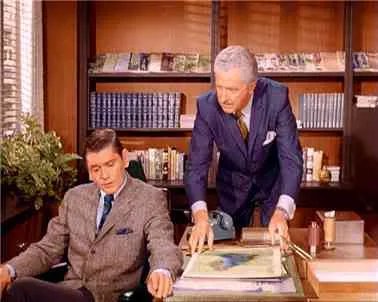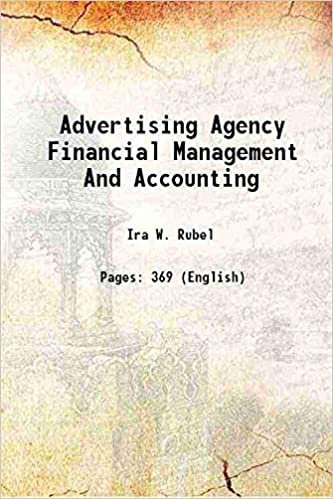What I learned from working with advertising agencies. Continue reading
When Sue and I first met with the people from Harland-Tine in 1981, everything that I knew about advertising agencies came from watching Bewitched when I was in high school. I soon learned1 that most medium-sized ad agencies included people with the following types of jobs:
- Account executives: These were the people who meet with the clients. Their primary function was to keep the clients happy, either by explaining what the agency was accomplishing or by keeping them in the dark. Some were also responsible for recruiting new clients.
- Creative: Writers and artists usually worked in teams of two or three to come up with the campaigns and the ads used in them.
- Production: These people actually executed the ideas.
- Media: These employees communicated with the stations, networks, publications, etc. to schedule the advertising. They also made sure that the media vendor provided documentation that the ads were run as scheduled. In broadcast this was done via affidavits. Print media supplied tearsheets.
- Administrative: Billing and other functions were done by the business office. Sometimes there were other areas as well, such as building maintenance and parties. Ad agencies liked parties.
Ad agencies preferred to measure themselves by their “billings”, a more than slightly deceptive term. An agency that describes itself as having $10 million in annual billings did not arrive at that figure by adding up the figures on the invoices that they sent to clients. The reason for this is that the broadcast entities and most magazines paid, at least in theory, ad agencies a 15 percent commission on everything that they bought. So, if the agency had sent invoices to the client for $10 million of media that it had billed, $8.5 million of it probably was paid to the media. Still, the agency billed it all, right?
Some vendors, notably most newspapers, did not give agencies commissions. Some agencies therefore marked up these charges by 17.65 percent to make them equivalent to other media. Regardless of what they actually billed, the reported billings would include the markup, not on their tax forms, but for promotional purposes.

In order to put agencies that that concentrated on other aspects of the business on the same footing as ones that billed a lot of media, it was common practice for agencies to use the same or similar ratios to calculate the “billings” that they reported. If a client paid a retainer, for example, of $1.5 million per year, that also was treated as $10 million in “billings”.
Further adjustments were also made, sometimes for questionable reasons. If they often used freelancers or other vendors on projects, should their costs be deducted before doing the calculation? The one overarching principle was that no one ever adjusted billings down. I once walked into an advertising agency that claimed “$50 million” in annual billings. I counted only six desks there. .
When I wanted to know how big an ad agency was, I asked them how many employees worked there. That was a better proxy variable for the amount of work that went through the agency than its billings.
Not every agency was a “full-service” agency. Some of them used a service to purchase media. On the other hand an agency in Illinois that we talked with did almost nothing but place newspaper ads for Sears. Another ad agency that used our system mostly produced point-of-sale signage for the beef industry. One “agency” in the Hartford area actually tried to talk its clients out of advertising. Instead, it promoted the idea of press releases. The agency would write them, and then try to persuade various media to run them verbatim or at least cover them as news items.
An agency could be as small as one or two people. The two essential items are a telephone and a good contact list, which in my day was likely kept on a rolladex.
Some international agencies were enormous, but many agencies of any size were startlingly ephemeral. I found that most ad agencies were no more than two phone calls away from oblivion. That is, very few of them could afford to lose their two biggest clients. In the big Madison Avenue agencies when an important account changed agencies, the creative team and sometimes others involved in the account might just move to the new agency. Any agency of any size that lost one of its biggest accounts would most likely cut staff and other expenses to compensate for the loss of revenue.
The proprietors of medium-sized agencies understood this. Most had at some point experienced it first-hand. In order to maximize their chances of surviving the dreaded phone call, they tried to minimize fixed costs. They would rather rent than own. Something that could not easily be used to wow a client or a potential client seldom made much of an impression on them. The usual argument that automation improved efficiency generally fell on deaf ears.
When I did pitches to clients, I emphasized billing. If the agency was not prebilling its media—billing from the schedule rather than from invoices from the vendor—I emphasized how easy it was to do this with our system. I argued that in those inflationary times they should be making 1 percent per month on their money. So, billing two months later was like forfeiting two percentage points of their commission!
I also explained how they could easily customize the invoices for other types of jobs. Each client’s could look different. It wasn’t exactly sexy, but at least it was client-oriented. I knew well that very few agency heads were looking to make life more pleasant for their bookkeeper.
The other thing that I focused on was the profitability of client agreements. Most agency owners with whom we dealt had only a vague idea as to which clients are profitable. Few of them were good businessmen. We could show them on the system’s cost accounting reports how to analyze the profitability of clients for the month and year-to-date, and, if they found a problem, they could probe more deeply with other reports.
I think that our system served our agency clients well. I know for a fact that it helped a few of them through some difficult times.
A few aspects of the way that we handled accounting for advertising agencies were somewhat unique. These features were not really marketable unless the agency’s accountant was involved in the purchase.
- We developed separate systems for media billing and accounts payable. They did not use the same programs used for other billing and vendor invoices. Both the billing and the A/P systems matched up the invoices with the items from the media scheduling system.
- Non-media jobs that were billed in advance were credited to an advance bills account. The entries taking these amounts as income had to be made individually.
- Every agency that did any kind of production or creative work kept an asset account called billable work-in-process (WIP). The system printed a list of the WIP for every active job at the end of the month. The change in WIP from month to month was booked as income.2
These methods were my own invention. I never took an accounting class in college and, for that matter only one programming. Never, however, in my thirty-five years of setting up computerized accounting systems for people did anyone challenge my credentials.
Some agencies recognized that they needed to computerize the administration of the agency, but they were not competent to figure out how to do it. So, they hired consultants. I absolutely hated dealing with consultants. They would begin the research process with a set of standards that they had developed, not from dealing with ad agencies or even by listening to what the agency in question hoped to accomplish, but from their experience with other companies that were unlikely to be comparable to ad agencies.
Sometimes they would send out a Request for Proposal (RFP) that outlined the requirements that they intended to impose. Often I could tell that TSI would be eliminated immediately for one reason or another. Almost never did the RFP ask if the system could be customized, or if it generated any of the billing or client profitability advantages outlined above.
Only one of our installations was produced through a consulting firm, and it was a disaster for us (wasted time), the agency (wasted a lot of money), and the consultant (law suit), That experience is described here.
The experience with advertising agencies broadened my horizons. I learned enough about the details of advertising that when the opportunity arose, I was able to make a successful pitch to Macy’s advertising department. That story is told here.
I also amassed enough details about the mindset of an advertising executive that I wrote a prize-winning short story about one. That account is here.
I never got interested in advertising, but in order to market to the New England agencies I had to follow their ups and downs. Seeing a few dramatic crashes reinforced my desire not to depend too much on any one client. That philosophy helped to sustain us through the nightmarish year of 1991, when our two largest clients both declared bankruptcy.
1. The Internet drastically affected advertising agencies. Much of what I learned is probably obsolete in 2021.
2. The American Association of Advertising Agencies (AAAA, pronounced “four A’s”) recommended a different method that was more cumbersome and less useful. Every accountant who ever saw what we did thought that it was equivalent but provided more useful audit trails, took much less time, and was less susceptible to errors.






Pingback: 1981-1985 TSI: The Quest for the Holy Grail | Wavablog
Pingback: 1981-1985 TSI: GrandAd: The Datamaster Clients | Wavablog
Pingback: 1981-1985: TSI: A4$1: The Clients | Wavablog